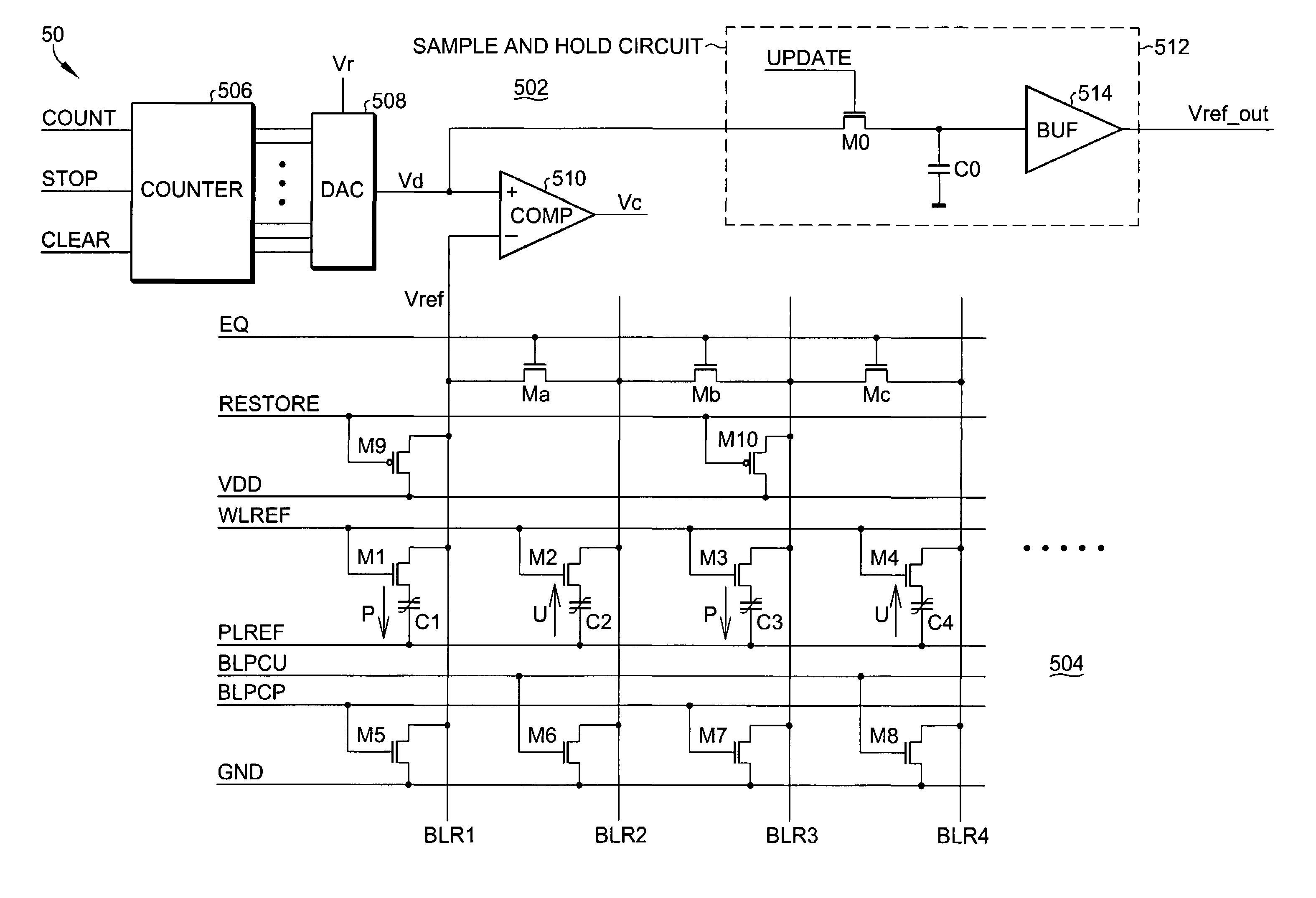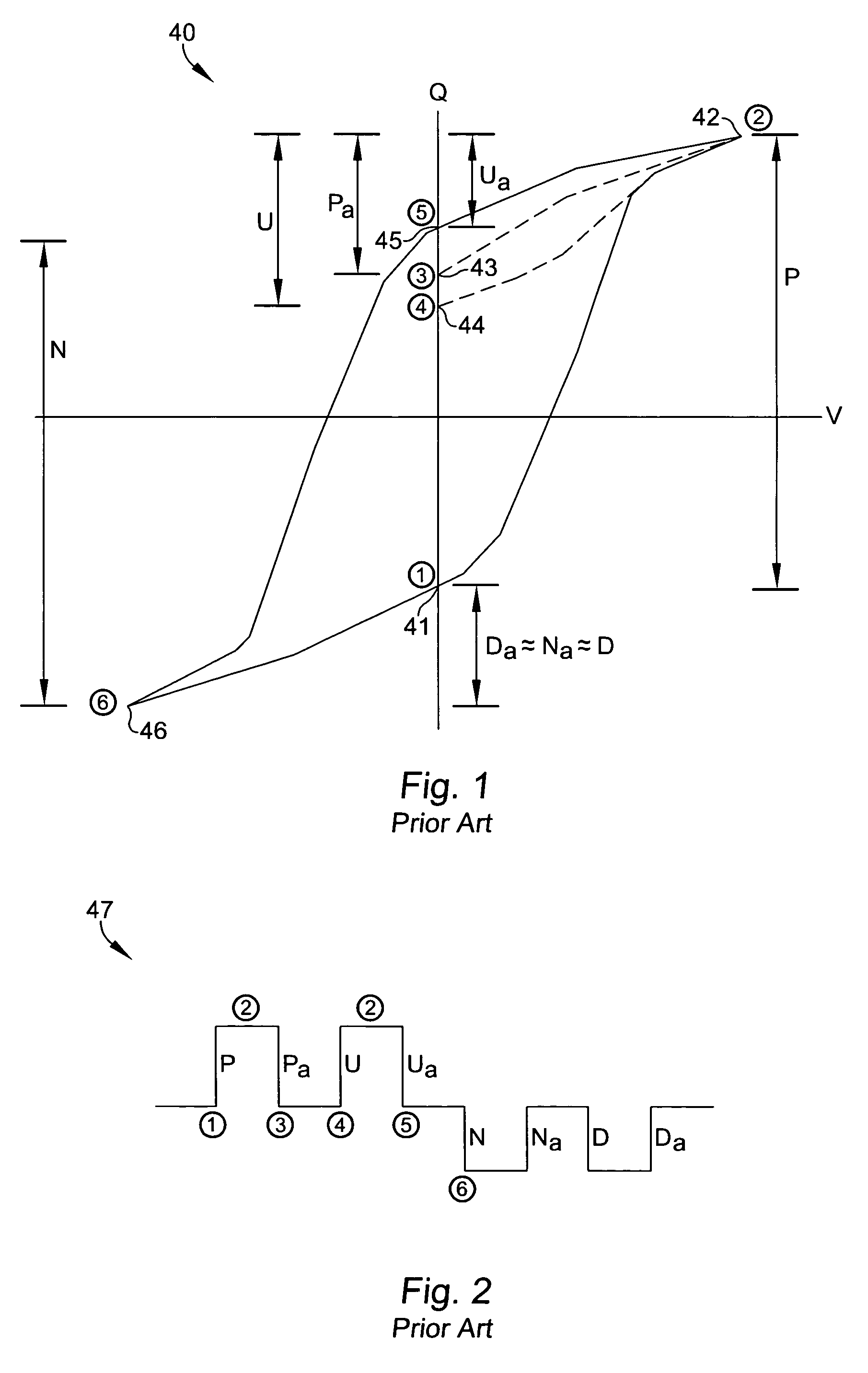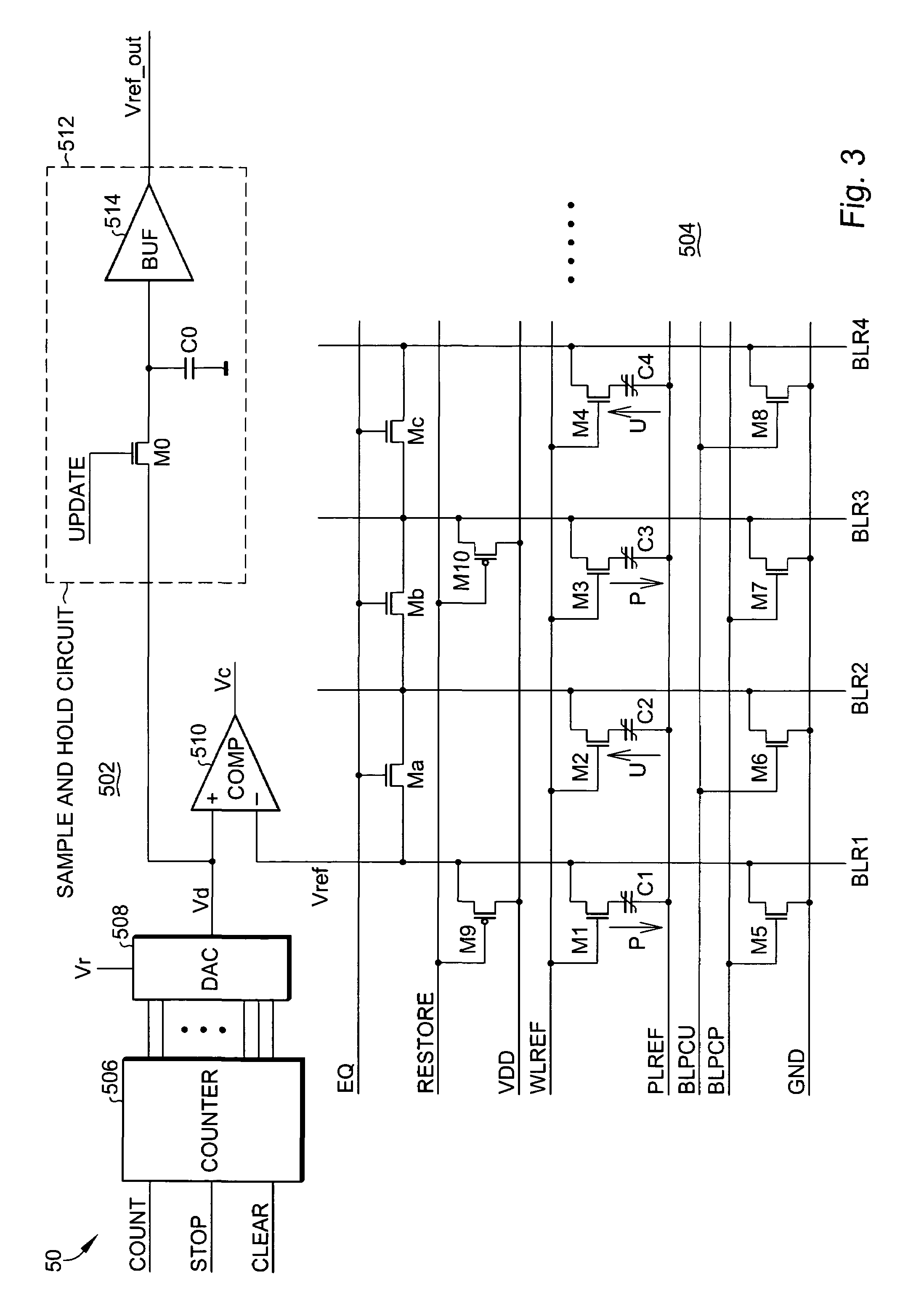Circuit for generating a centered reference voltage for a 1T/1C ferroelectric memory
a ferroelectric memory and reference voltage technology, applied in the field of ferroelectric memories, can solve the problems of time reliability problems, loss of a certain amount of signal margin for using these prior art reference circuits, and limited range of reference voltage selection, so as to maximize signal margin and cost-free
- Summary
- Abstract
- Description
- Claims
- Application Information
AI Technical Summary
Benefits of technology
Problems solved by technology
Method used
Image
Examples
Embodiment Construction
[0025]Referring now to FIG. 3, a reference circuit 50 for a ferroelectric memory includes a reference generating circuit 504 for generating a ferroelectric reference voltage and an “updating” or refresh circuit 504 coupled to the reference generating circuit through the VREF line for providing a periodically updated version of the ferroelectric reference voltage at the VREF_OUT output.
[0026]The reference generating circuit 504 includes at least two ferroelectric reference cells, each including a transistor and a ferroelectric capacitor. A first ferroelectric reference cell includes transistor M1 and ferroelectric capacitor C1. A second ferroelectric reference cell includes transistor M2 and ferroelectric capacitor C2. Any even number of ferroelectric reference cells may be used, as is explained in further detail, below. In the embodiment shown in FIG. 3 a third ferroelectric reference cell including transistor M3 and ferroelectric capacitor C3, as well as a fourth ferroelectric refe...
PUM
 Login to View More
Login to View More Abstract
Description
Claims
Application Information
 Login to View More
Login to View More - R&D
- Intellectual Property
- Life Sciences
- Materials
- Tech Scout
- Unparalleled Data Quality
- Higher Quality Content
- 60% Fewer Hallucinations
Browse by: Latest US Patents, China's latest patents, Technical Efficacy Thesaurus, Application Domain, Technology Topic, Popular Technical Reports.
© 2025 PatSnap. All rights reserved.Legal|Privacy policy|Modern Slavery Act Transparency Statement|Sitemap|About US| Contact US: help@patsnap.com



